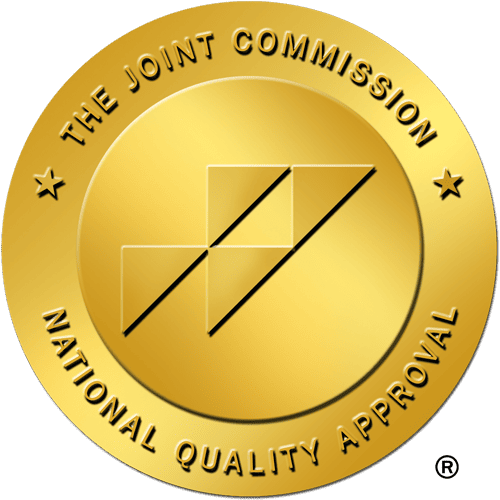Eating Disorder Treatment
Eating Disorder Outpatient Treatment Helps Establish Lifelong Healthy Behaviors
Eating disorders are complex mental health disorders signaled by an unhealthy relationship with food, weight or appearance. Eating disorders affect people of all ages, genders, races, and sizes. Approximately 30 million Americans struggle with an eating disorder.
People may experience severe associated mental health disorders as well as physical and emotional symptoms. Of all mental health disorders, eating disorders have one of the highest fatality rates making treatment crucial.
At Renewed Light in West Deptford, New Jersey, we provide eating disorder outpatient treatment that includes individual and group therapy led by licensed, experienced therapists who understand the challenges associated with eating disorders. Through group and individual discussion you’ll have an opportunity to identify the root causes of your disorder and work through any underlying trauma and related issues while also identifying emotional triggers. Ultimately, our outpatient eating disorder treatment program helps you develop healthy new patterns of behavior and thinking.
What are the different types of eating disorders?
There is a variety of eating disorders, but the Fifth Edition Diagnostic and Statistical Manual of Mental Disorders (DSM-5) recognizes the following as eating disorders:
What is anorexia nervosa?
People with anorexia nervosa restrict their food and calorie intake. This eating disorder is characterized by an obsessive desire to lose weight and not eating a healthy diet. Often this leads to extremes, even starvation. Anorexia affects people of all body sizes. /span>
Anorexia can lead to malnutrition and severe health issues. Symptoms may include:
- Feeling tired and weak
- Trouble concentrating
- Constipation, diarrhea, stomach pains
There may also be long-term health consequences such as:
- Osteoporosis and growth issues in children and young adults
- Irregular heartbeat, low blood pressure, heart failure, heart valve disease
- Memory issues
- Kidney problems
- Weakened immune system
- Anemia
Anorexia is a life-threatening disease. Physical complications and suicide are the leading causes of death due to anorexia nervosa.
What is bulimia nervosa?
Bulimia nervosa is a disease where people binge eat or they eat large meals in a short time. After binge eating, they vomit, use laxatives, or over-exercise to purge their bodies of the calories. Unlike those with anorexia nervosa, people with bulimia often gain or maintain their weight.
Complications that may arise due to bulimia include:
- Feeling tired and weak
- Dental issues – stomach acid from constant vomiting damages tooth enamel
- Dry hair and skin
- Brittle fingernails
- Swollen glands
- Muscle spasms
- Heart, kidney, and bowel problems
- Bone issues such as osteoporosis
Bulimia is often hard to spot since people usually do it privately, but it’s crucial to seek treatment as it is life- and health-threatening.
What is a binge eating disorder?
A binge eating disorder, or BED, is when a person losses control of their eating. Like bulimia, binge eaters eat large amounts of food in a short time. However, with binge eating disorders, people do not purge their bodies of calories.
People who struggle with a binge eating disorder are often overweight or obese. And while binge eating can start at any age, people typically begin developing this unhealthy eating pattern in their older teens and early 20s.
Complications from a binge eating disorder include:
- Obesity
- High risk for high cholesterol, high blood pressure, diabetes, gallbladder disease, and heart disease
- Increased risk of psychiatric disorders such as depression
Binge eating disorders may be challenging to spot as most people binge eat in private. If you struggle with a binge eating disorder, it’s crucial to seek treatment.
What is avoidant/restrictive food intake disorder?
Avoidant/restrictive food intake disorder is characterized as failing to meet daily nutritional requirements. This typically develops due to a lack of interest in eating or a fear of the consequences of eating due to things like choking. People with avoidant/restrictive food intake disorder may also avoid specific sensory characteristics of food like color, smell, or texture.
The development of avoidant/restrictive food intake disorder is not due to a fear of weight gain. However, it can result in extreme weight loss or failure to gain weight and health issues from nutritional deficiencies. Eating disorders therapy can help people overcome their unhealthy thinking about food.
Getting a diagnosis: First step in eating disorder outpatient treatment
Once a person recognizes the need for eating disorder treatment, the first step is making a doctor’s appointment. Physicians as well as mental health professionals can diagnose eating disorders.
A primary care physician often does a physical exam, orders blood work, and reviews symptoms to make a diagnosis. In comparison, a mental health professional such as a psychiatrist or psychologist conducts mental evaluations to understand the beliefs involving food and your eating habits.
Eating disorders are diagnosed using the criteria outlined in the DSM-5. These criteria are broken down by specific eating disorders. However, you don’t need to meet all the criteria to receive a diagnosis. In fact, you may still need eating disorders therapy even though you don’t meet any criteria in the DSM-5.
Your eating disorder treatment plan may include a combination of therapy, education, and medication. The types of therapies used in the treatment of eating disorders depend on the type of eating disorder and the type of any co-occurring mental health issues you might have.

Cognitive-behavioral therapy for eating disorders
Cognitive-behavioral therapy, or CBT, is a type of talk therapy. CBT is helpful because it helps you quickly identify your challenges. CBT also helps you learn healthy coping skills.
The basic principles of CBT for eating disorders treatment include:
- Unhealthy negative thinking patterns encourage the problem
- Negative behavior is partly to blame for eating disorders
- CBT provides healthy coping skills and builds healthy thinking
Although CBT typically comes with no risks, a trained professional can provide gentle psychological care to encourage change.
Dialectical behavior therapy for eating disorders
Dialectical behavior therapy, or DBT, is a form of CBT. However, DBT focuses on social and psychological factors. Thus, to help people understand and control their emotional reactions, DBT works on these four specific areas:
- Mindfulness – the practice of being fully aware in the present moment
- Distress tolerance – learning to tolerate distressing feelings
- Interpersonal Effectiveness – expressing one’s needs and setting healthy boundaries
- Emotional regulation – learning to change unhealthy emotions
DBT is most beneficial when used in both individual and group therapy sessions. Find out more about mental health therapy at Renewed Light.
Discover eating disorder outpatient treatment in New Jersey
If you suffer from an eating disorder or other mental health disorder, you’re not alone. More than 50 percent of Americans will get diagnosed with a behavioral health disorder during their lifetime. Fortunately, Renewed Light offers a range of outpatient therapy options and programs that can help you take back your life. Located in West Deptford, New Jersey, we serve all of New Jersey, Delaware, and Pennsylvania.




